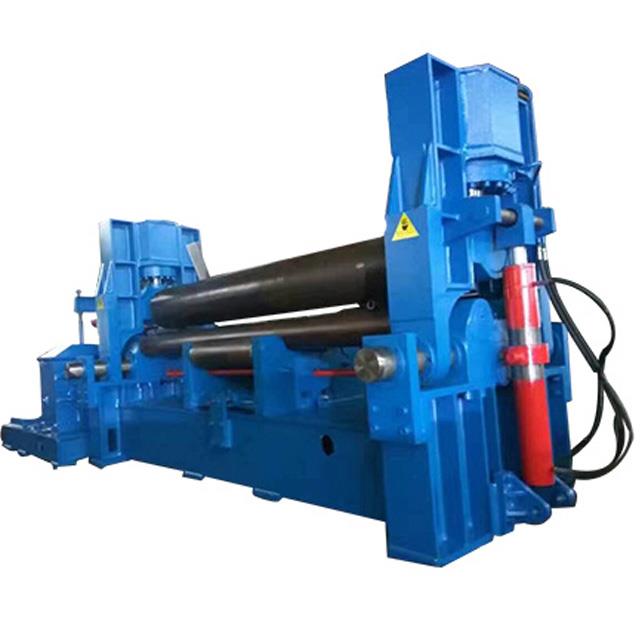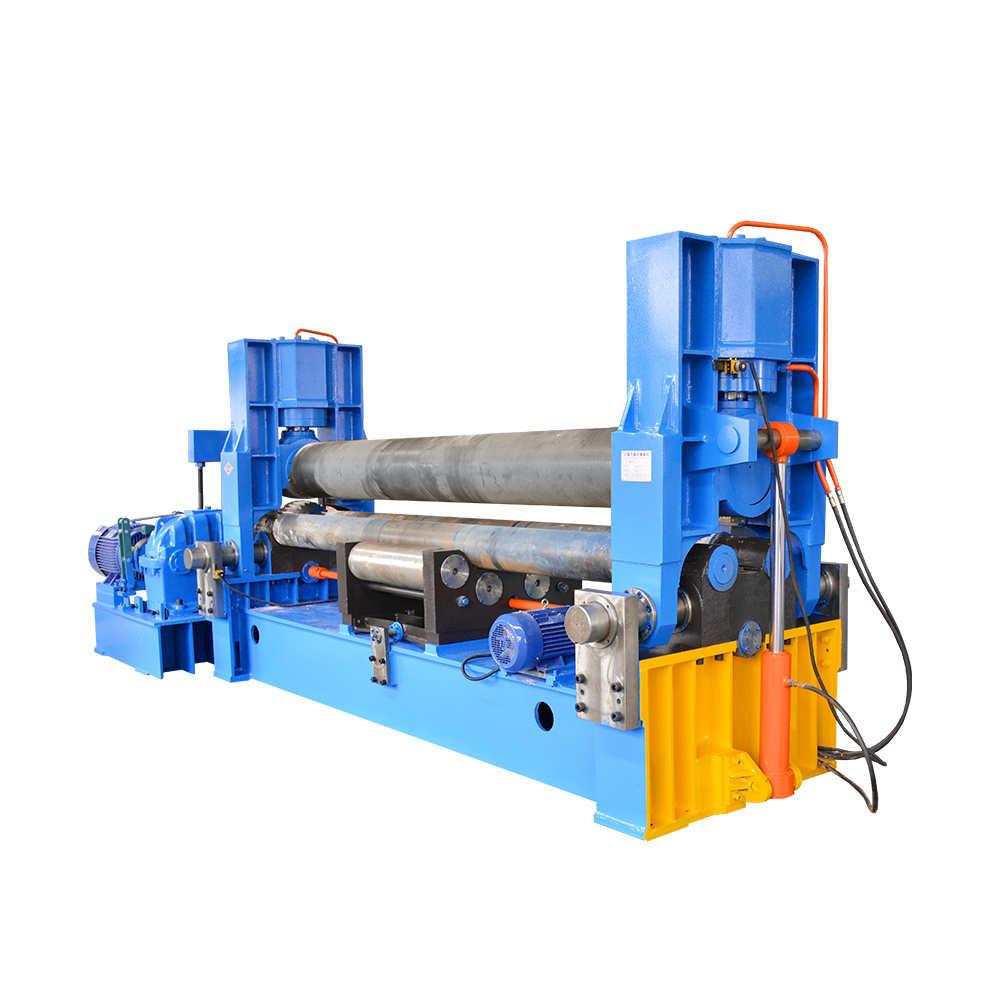Understanding CNC Plate Rolling Machines
Release Time : 2024-12-10 View Count : 次A plate rolling machine is essential for bending metal sheets into shapes such as cones, spheres, and cylinders. Commonly used in manufacturing, boiler production, chemical processing, and non-metallic structure fabrication, these machines come in two primary types: three-roller and four-roller, each suited to different applications.
Three-Roller vs. Four-Roller Plate Rolling Machines
Three-Roller vs. Four-Roller Plate Rolling Machines

The main difference between a three-roller and a four-roller plate rolling machine is the number of rollers, but several other factors differentiate these two types. The three-roller machine features a simple, practical design suitable for basic rolling applications, with either symmetrical or asymmetrical roller configurations. The four-roller machine, however, has a more sophisticated hydraulic-controlled design that offers greater precision and additional features such as pre-bending the plate ends in a single operation.
In the three-roller machine, the upper roller is positioned between two lower rollers (in symmetrical versions), or two are on one side (in asymmetrical versions). The four-roller machine, on the other hand, uses hydraulic power and has a main drive on the upper roller, with side rollers to assist with pre-bending and rolling. This design allows for more precise and versatile bending operations.
Automation, Power Mode, and Efficiency

Automation, Power Mode, and Efficiency

The automation and control systems vary significantly between the two. The three-roller machine typically operates manually, requiring operators to adjust settings during the process. In contrast, the four-roller machine features a fully automated CNC system with a touch screen interface, allowing for precise control, automatic data storage, and error self-diagnosis.
The four-roller machine’s hydraulic system also makes it more efficient, offering higher power control and better accuracy. It enables pre-bending and rolling of the plate ends in one cycle, reducing the need for additional equipment. The three-roller machine, while more affordable, is generally slower and less efficient in high-volume production settings.
Work Efficiency and Price Considerations
Work Efficiency and Price Considerations

The four-roller plate rolling machine excels in work efficiency due to its automation and hydraulic power, enabling faster processing times and higher output. It also provides higher processing accuracy, especially when handling complex shapes like cones, which the three-roller machine cannot achieve with the same precision.
While the three-roller machine is more affordable, the four-roller machine offers better long-term value for those needing higher precision and more complex operations. For basic tasks, the three-roller machine is a cost-effective choice, but for greater efficiency and flexibility, the four-roller machine is the preferred option.
Making the Right Choice
Making the Right Choice

Choosing the right plate rolling machine depends on your production needs. If your work requires basic bending tasks and you're looking for an economical solution, the three-roller machine is a suitable option. However, for high-precision work and larger production volumes, the four-roller machine provides the best performance and value.
At MC, we offer both types of plate rolling machines tailored to your specific needs. With over ten years of industry experience, we provide customized solutions and reliable support. Contact us today to learn more or place an order.











